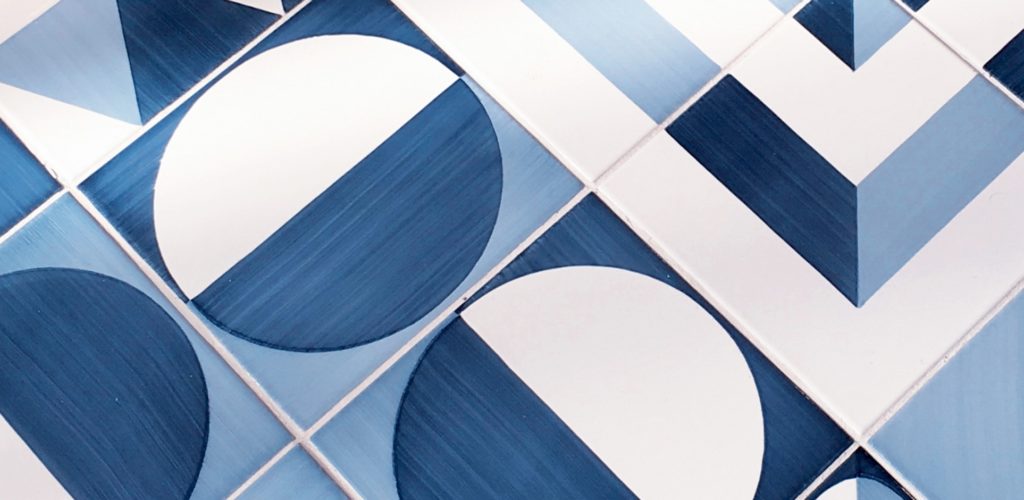
Authentic Re-Edition of Gio Ponti’s Hotel Parco dei Principi Tiles
If you had the wherewithal, where would you go to experience the bluest blue, the whitest white?
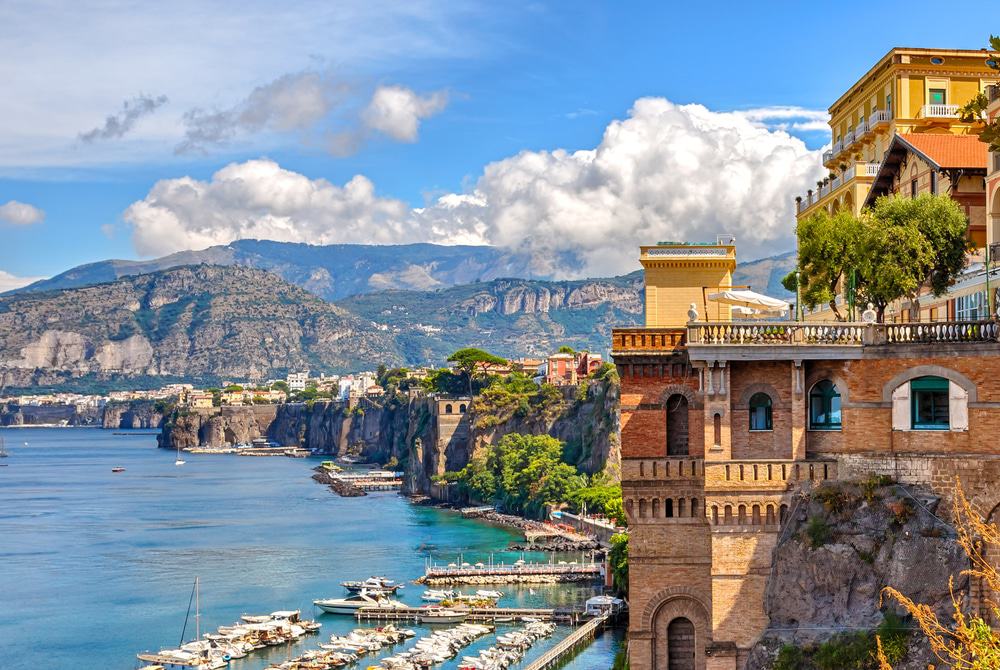
Vista of Sorrento, Italy
My first thought is the Swiss Alps on a bone-cold January day, after the storm. But for those of a more Mediterranean predilection, Sorrento in Italy is a clear contender.
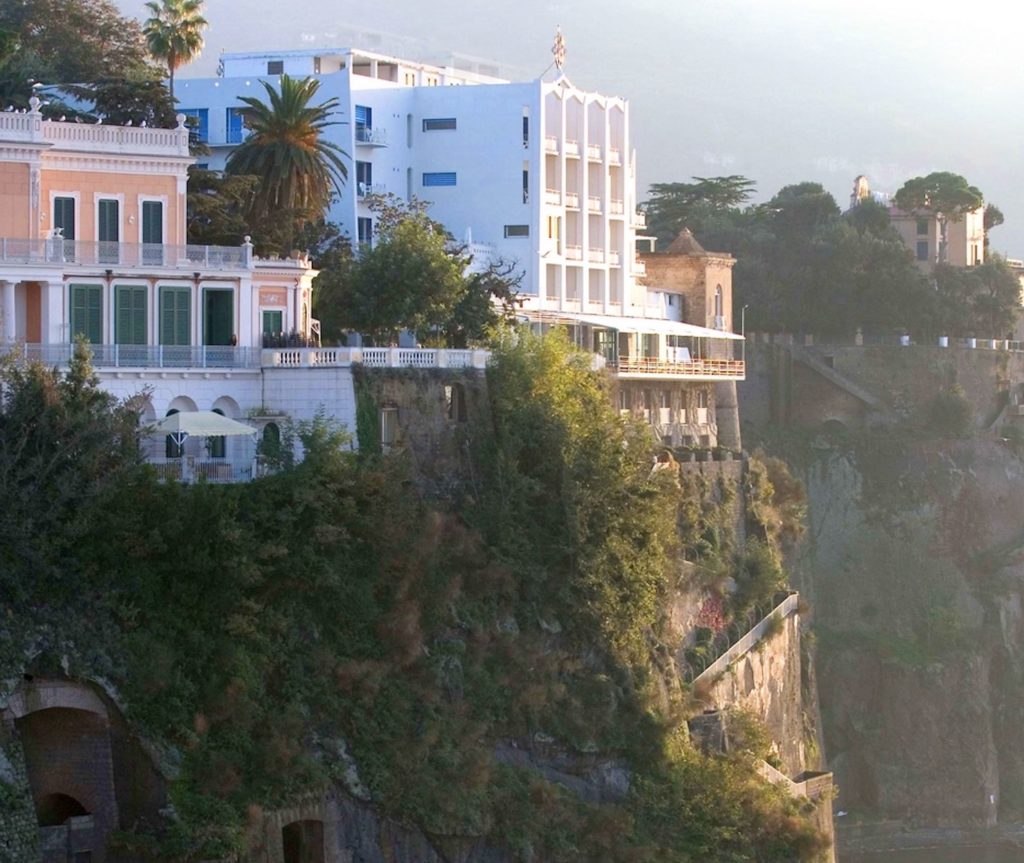
Hotel on a hill: the Parco dei Principi in Sorrento, designed by Gio Ponti
Gio Ponti most likely would concur. The iconic architect, designer, essayist, and visionary entrepreneur created the Parco dei Principi hotel in 1960—imaginatively harnessing the geo-temporal qualities of its locale: the blue of sky and sea, the faint hint of ocean mist forever in the air, the towering heights of sea-side cliffs adorned with encroaching greenery.
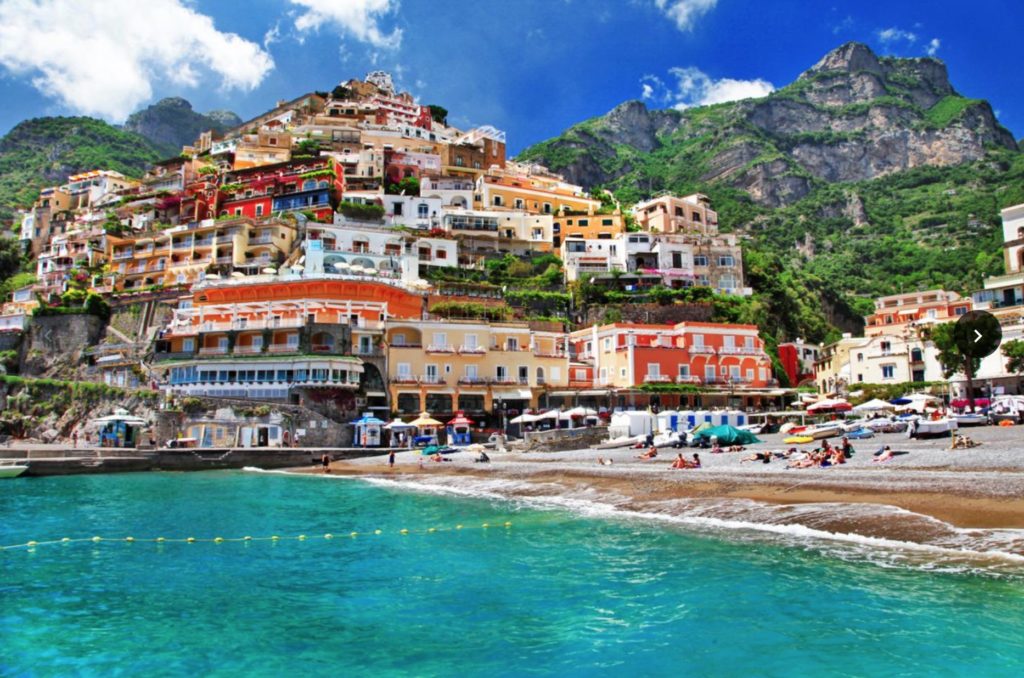
The region around Sorrento. So blue it’s almost green.
Gripped by the endless blue of the seaward horizon, Ponti integrated the color throughout the hotel, conceiving of a multitude of ways to play blue off of white and vice versa: “Let blue and white be on the outside, the architecture, and let white and blue be on the inside.”
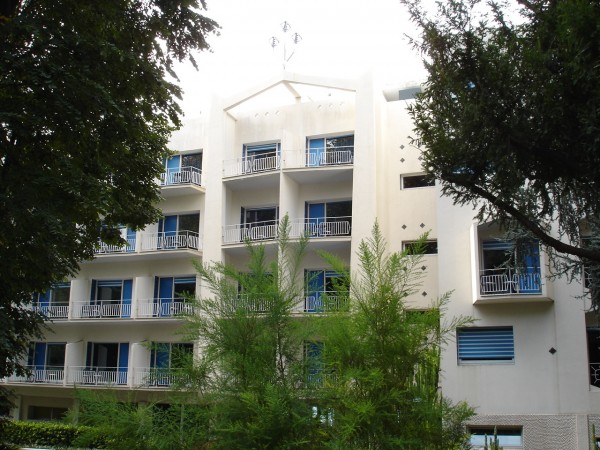
Hotel facade. A rare white sky in Sorrento.
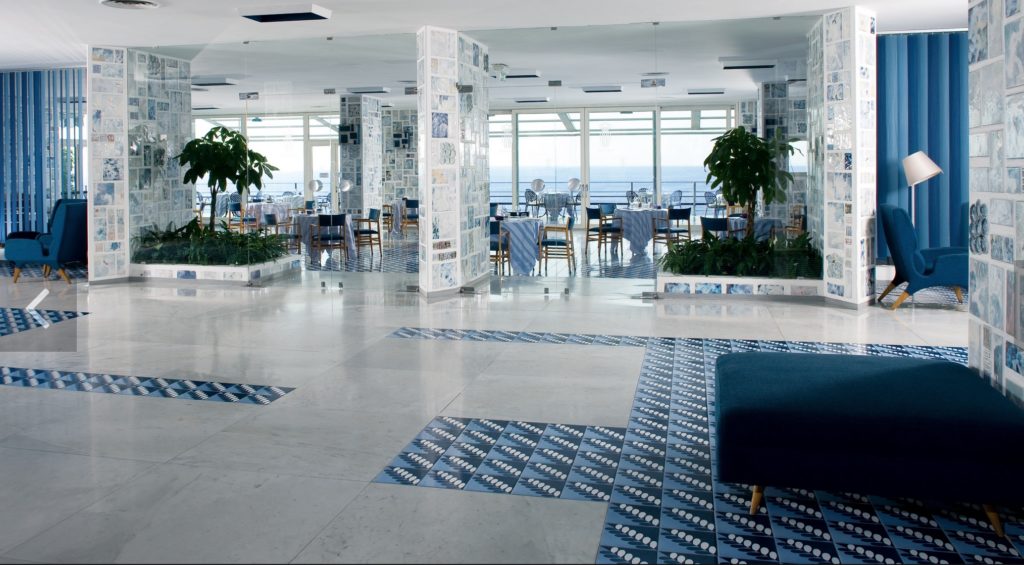
The lobby: gradations of, and variations on, blue and white
Like any Italian auteur worth his salt, Ponti took charge of all aspects of this project, including designing much of the furniture and creating an entire suite of hand-painted majolica tiles, known as Blu Ponti, with which he adorned much of the hotel’s walk-able terrain: the floor of the vast lobby, the lounge, the Blu bar, the restaurant, the rooms, the pool floor, and the veranda.
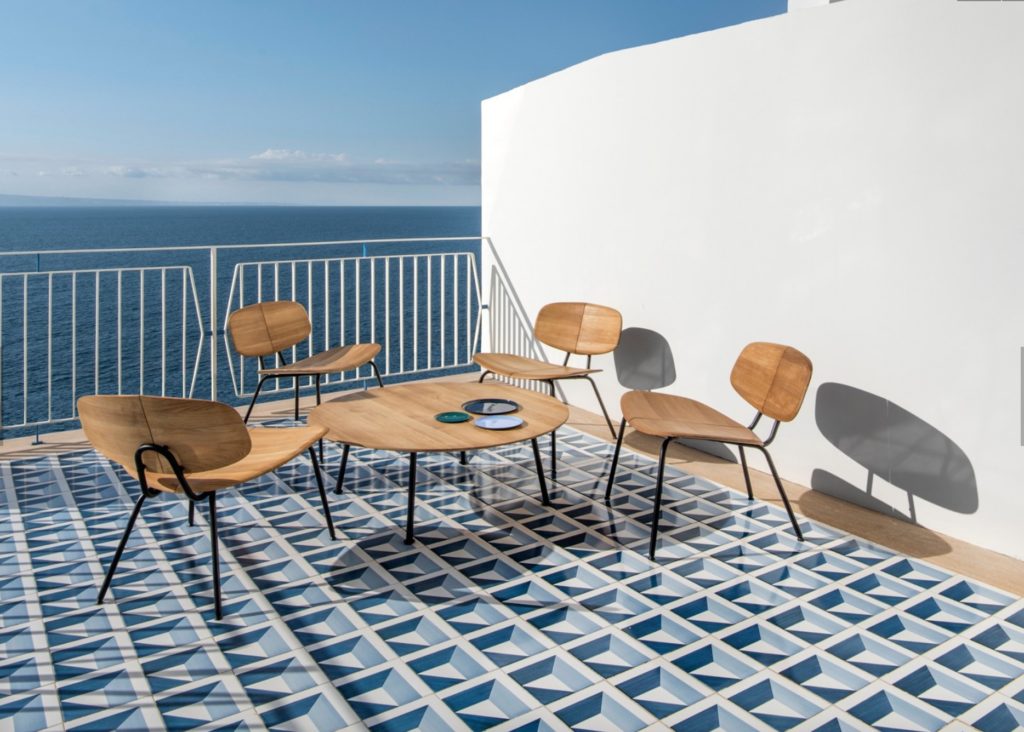
Parco dei Principi veranda. Shades of M.C. Escher in the depth and perspective of the Blu Ponti tiles.
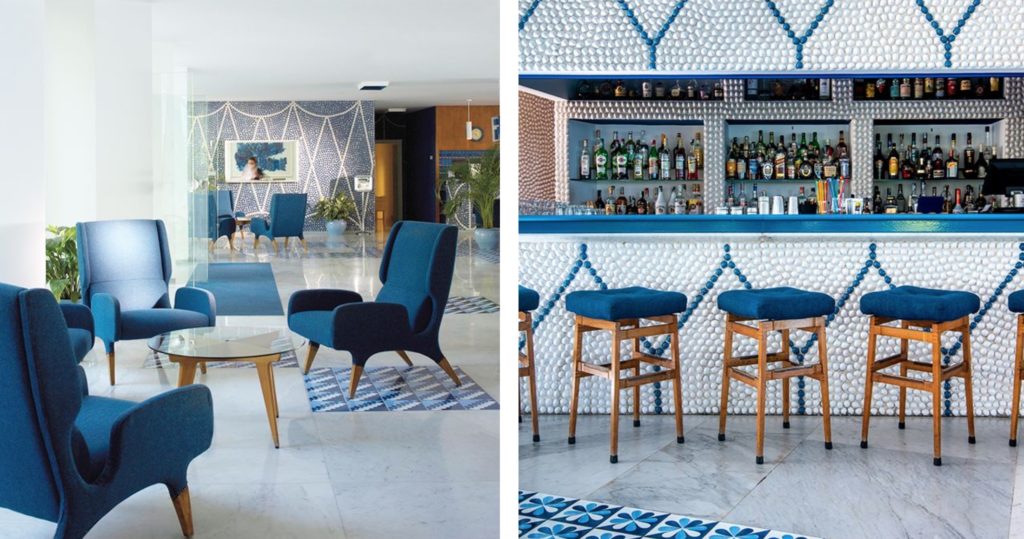
The lounge and Blu Bar. The embossed ceramic work on the vertical surfaces is by the sculptor Fausto Melotti.

The pool floor. Handmade, hand-painted tiles in the Vietri tradition: inherent slip-resistance and impermeability.
Blu Ponti proposed an impressive palette: 33 different designs of largely vertical lines. As Ponti himself remarked, it’s astounding how many different shapes and patterns can be created with a simple line, not to mention when these lines take flight, vertically and horizontally, diagonally and in playful zig-zags, bumping up against different shades of blue and always counter-posed by insistent intrusions of white.
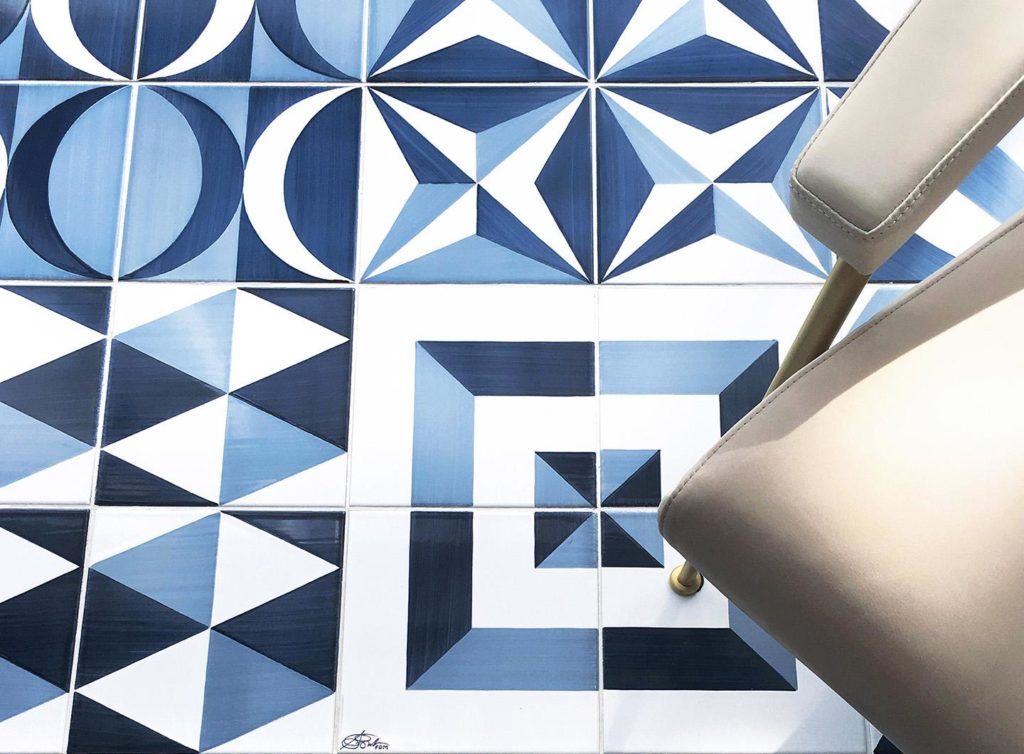
The collection also includes some abstract renditions of organic shapes. In the image below I spot leaves, palm fronds, starbursts and the phases of the moon.
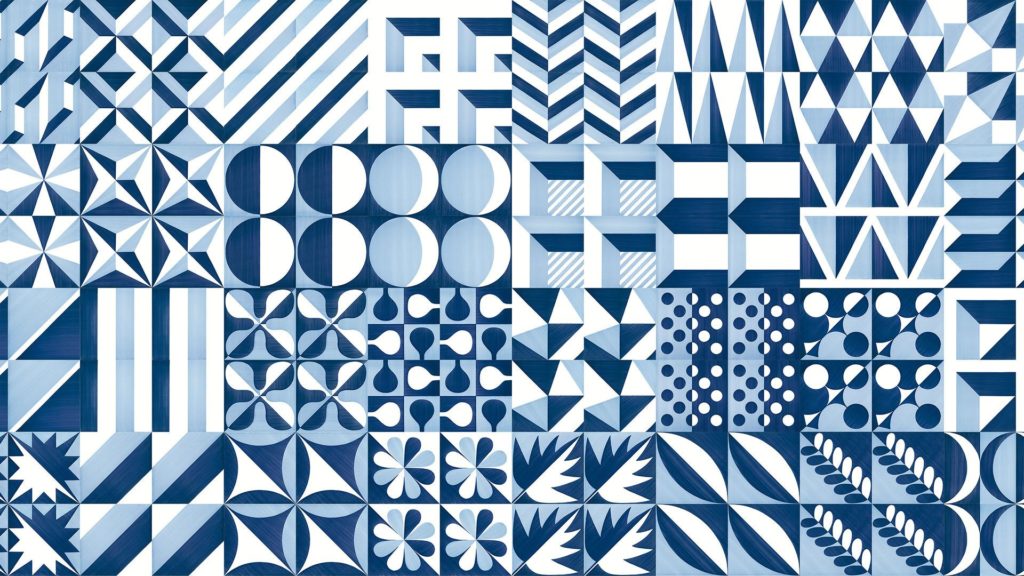
The Blu Ponti collection is comprised of majolica tiles. Historically a method of firing the clay and applying the glaze, the term refers to the port of Mallorca (Morroco) in Spain, which was the principal exit point for ceramics made in Mediterranean Europe. Majolica became synonymous with the technique of applying a heavy opaque glaze to obscure the color of the base red clay. This not only gave the tiles an especially vivid coloration, but also imparted a raised, three-dimensional quality.

Gio Ponti’s majolica tiles in a guest room at Parco dei Principi
Today, Blu Ponti is the exclusive provenance of Francesco de Maio Vietri ceramics. Located in Nocera Superiore—the very heart of the famed Vietri style, essentially at the the shin of Italy’s well-heeled foot—Francesco de Maio honors their lineage with a continued commitment to artisanal, hand-decorated tiles.
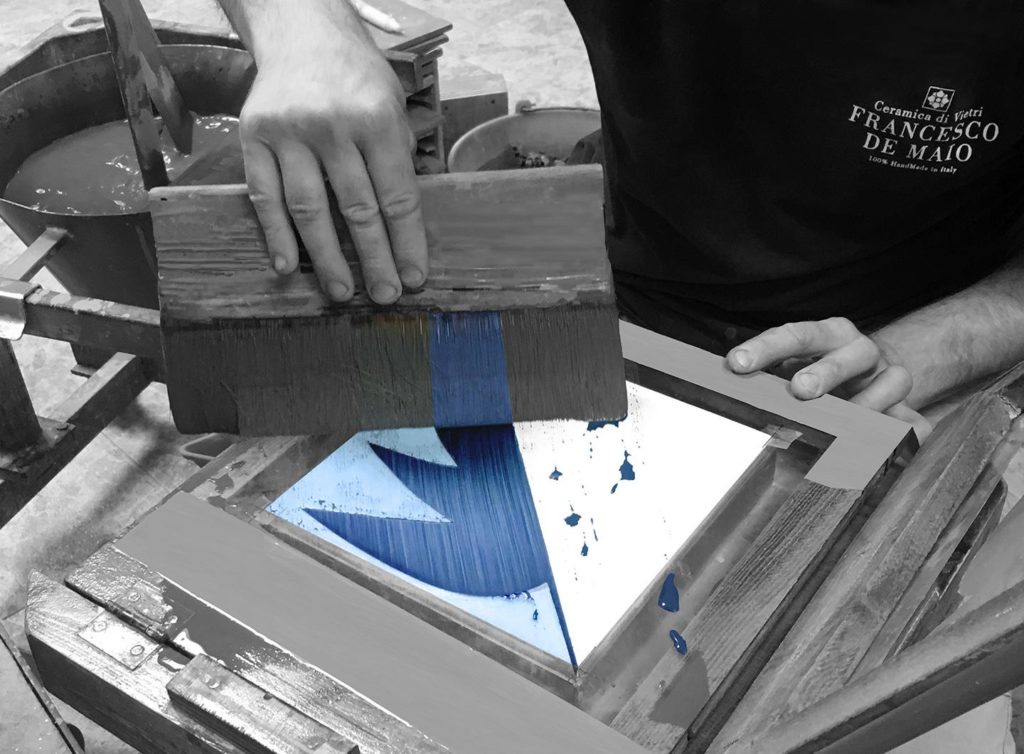
Glazing a Blu Ponti tile with the original stencil technique. The heavy strokes help create the distinctive pattern and texture of Ponti’s originals.
Selected by Ponti’s heirs as the exclusive licensee for the modern re-edition, Francesco de Maio is the only authorized purveyor of Blu Ponti tiles, “an exclusive production that stands out for its elegance and impeccable design… rigorously hand-painted, hand-decorated majolica tiles made in accordance with ancient techniques to merge the craftsmanship, territoriality, and design of Italy.”
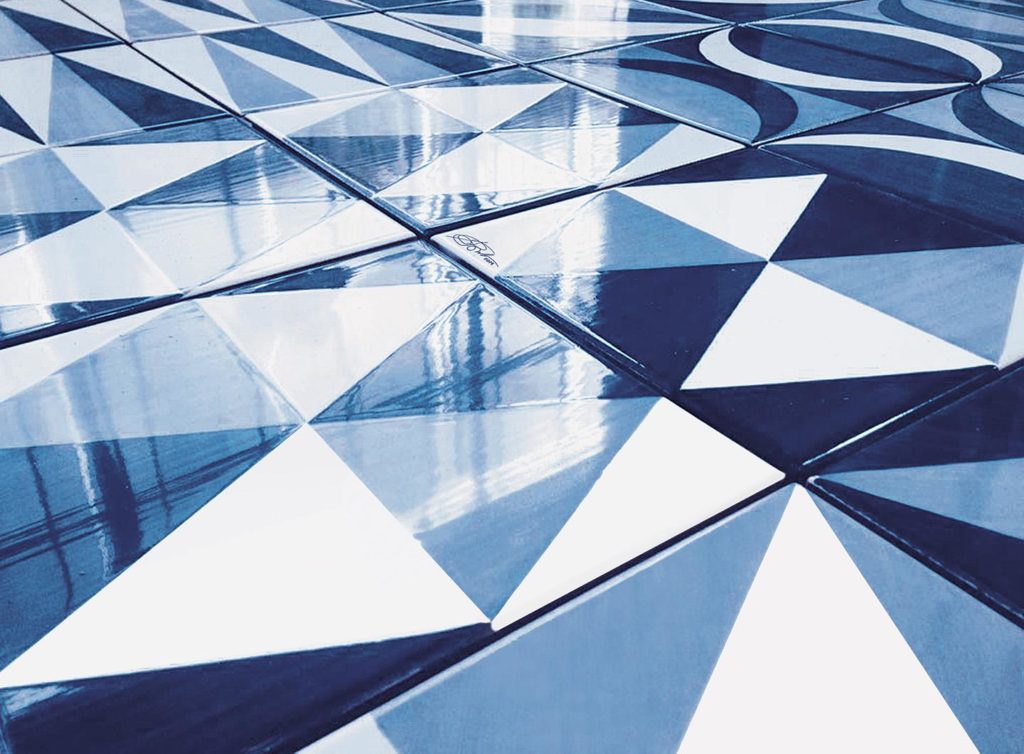
Blue and white still reign at Parco dei Principi, but Francesco de Maio has added a couple of new dimensions to Ponti’s 33 original designs. The first is that the tiles are now made with the company’s patented Grès Maiolicato stoneware support, for enhanced slip-resistance and indoor/outdoor durability. The second is that they’re now available in verde, nero, rosso, and giallo. Here’s how it looks in green:
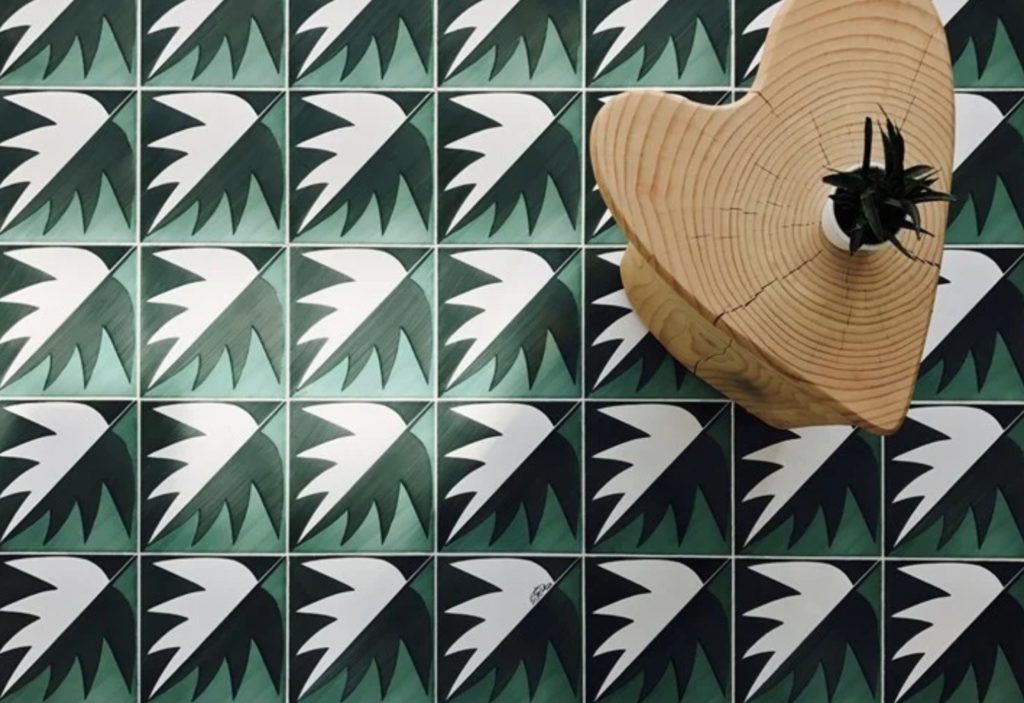
Find out more at Francesco de Maio.
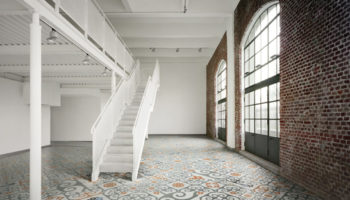
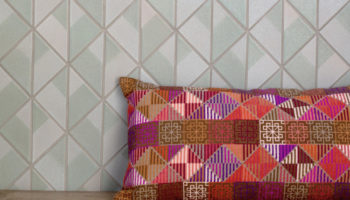


Leave a Reply